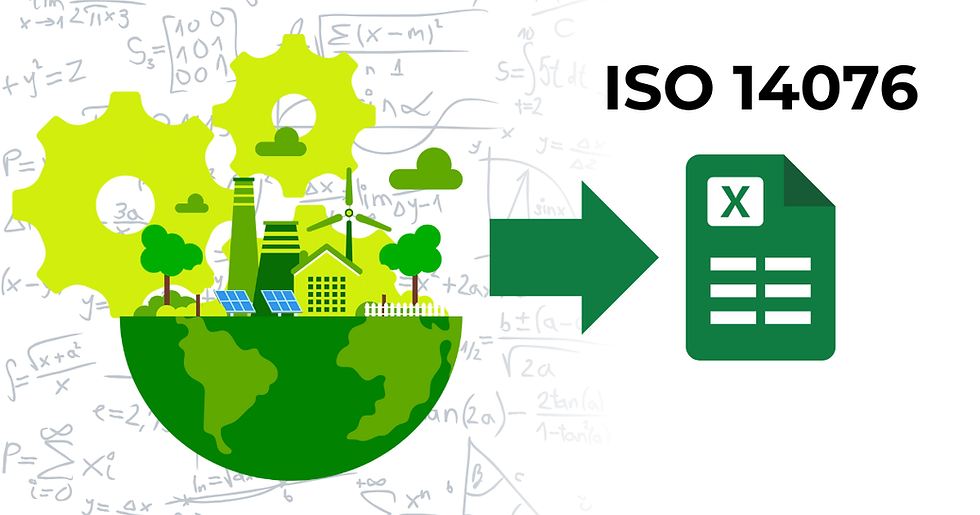RXN HUB Contributes to ISO Standard to Validate Clean Technologies
- Karleigh Young
- Jun 19
- 3 min read
Updated: Sep 2

RXN HUB is proud to announce that its team was one of only two Canadian representatives on the international committee that developed ISO 14076: Environmental Techno-Economic Assessments (eTEAs). This new global standard provides a structured way to evaluate both the economic potential and environmental impacts of emerging technologies, giving innovators and decision-makers a trusted tool for guiding investments, policies, and commercialization pathways.
Why ISO 14076 Is a Breakthrough Standard to Validate Clean Technology Commercialization
Bringing a new technology from the lab to the marketplace is exciting but risky. In the early phases of development (Technology Readiness Levels 2–5), innovators often struggle with scale-up risk. Data collected from small experiments rarely predicts how a process will behave in a pilot plant or at industrial scale. This makes it difficult to forecast costs, manage risks, and demonstrate environmental responsibility.
Until now, two main tools helped guide these decisions:
Techno-Economic Assessments (TEAs): used for decades to estimate costs and performance before major engineering studies like Front End Loading (FEL-1).
Life Cycle Assessments (LCAs): established under ISO 14040 to measure environmental impacts such as greenhouse gas emissions, resource use, and pollution.
What makes ISO 14076 groundbreaking is that, for the first time, it combines these approaches into one framework. The standard sets out principles, requirements, and guidance for assessing:
the technical performance of a process;
the economic viability and scale-up potential;
the environmental consequences across the life cycle;
and the remaining development risks within a single assessment.
This holistic approach ensures that innovators, investors, engineers, and public officials all have a common language and robust tool for comparing opportunities and avoiding costly mistakes.
RXN HUB’s Role in Shaping the Standard
Dr. Steacy Coombs (Director of Technology Development), represented RXN HUB's voice and helped shape the methodology behind ISO 14076. Her expertise in piloting and commercialization studies helped ensure that the standard reflects the real challenges faced by chemistry-enabled start-ups and clean technology developers.
“Standardizing eTEAs is a big step forward for everyone involved in commercialization,” said Dr. Coombs. “It allows us to compare opportunities on a fair basis, manage scale-up risk more effectively, and build confidence in new technologies before major investments are made.”
As one of only two Canadian voices at the table, RXN HUB was able to bring a national perspective to the global discussion, ensuring that Canada’s innovators can apply and benefit from this international standard.
How ISO 14076 Benefits Innovators, Investors, and Communities
ISO 14076 will transform how decisions are made across the innovation ecosystem:
For innovators and engineers: it provides a structured way to test ideas early, reducing uncertainty before investing in pilot plants.
For investors and funders: it strengthens chemistry start-up valuations by combining environmental and economic data into one transparent assessment, making it easier to identify the most promising ventures.
For governments and communities: it ensures that new technologies support sustainable growth without creating unintended environmental or social costs.
By creating a clear, transparent, and repeatable methodology, ISO 14076 helps align stakeholders around the shared goal of scaling clean and sustainable technologies responsibly.
Advancing Clean Technology Scale-Up with Confidence
For RXN HUB, participation in developing this international standard aligns perfectly with its mission: to support the scale-up and commercialization of clean and chemistry-enabled technologies. By helping build ISO 14076, RXN HUB is not only advancing its clients’ success but also shaping the global tools that will guide the future of sustainable innovation.
“Early-stage technology development is one of the hardest places to balance cost, risk, and sustainability,” said Dr. Coombs. “With ISO 14076, the world now has a standard to validate clean technologies that makes these decisions clearer and more reliable.”




Comments